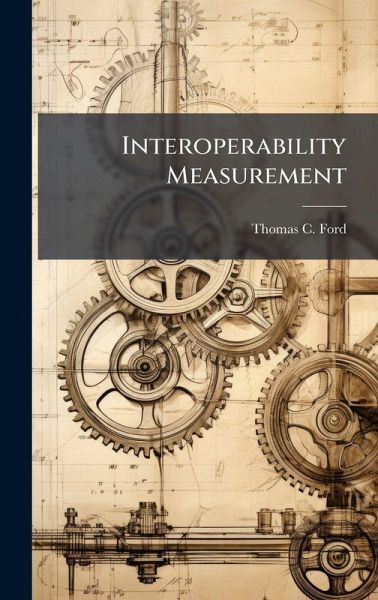
Interoperability Measurement
Versandkostenfrei!
Versandfertig in über 4 Wochen
30,99 €
inkl. MwSt.
Weitere Ausgaben:

PAYBACK Punkte
15 °P sammeln!
This research presents an inaugural general method of measuring the collaborative and confrontational interoperability of a heterogeneous set of systems in the context of an operational process. The method is holistic, fundamental, flexible, and mathematical in nature and accommodates all types of systems and interoperations. The method relates the interoperability measurement to measures of operational effectiveness for confrontational operational processes. Extant leveling methods of describing interoperability are shown to be a special case of the more general method given in this research ...
This research presents an inaugural general method of measuring the collaborative and confrontational interoperability of a heterogeneous set of systems in the context of an operational process. The method is holistic, fundamental, flexible, and mathematical in nature and accommodates all types of systems and interoperations. The method relates the interoperability measurement to measures of operational effectiveness for confrontational operational processes. Extant leveling methods of describing interoperability are shown to be a special case of the more general method given in this research and the general interoperability measurement method is demonstrated through the presentation of coalition interoperability, suppression of enemy air defenses, and precision strike applications. Further application is recommended in technical, non-technical, cross-domain, and non-traditional interoperability areas and additional research is suggested on the topics of indirect interoperability measurement and collaborative interoperability impact on operational effectiveness. This work has been selected by scholars as being culturally important, and is part of the knowledge base of civilization as we know it. This work was reproduced from the original artifact, and remains as true to the original work as possible. Therefore, you will see the original copyright references, library stamps (as most of these works have been housed in our most important libraries around the world), and other notations in the work. This work is in the public domain in the United States of America, and possibly other nations. Within the United States, you may freely copy and distribute this work, as no entity (individual or corporate) has a copyright on the body of the work. As a reproduction of a historical artifact, this work may contain missing or blurred pages, poor pictures, errant marks, etc. Scholars believe, and we concur, that this work is important enough to be preserved, reproduced, and made generally available to the public. We appreciate your support of the preservation process, and thank you for being an important part of keeping this knowledge alive and relevant.












